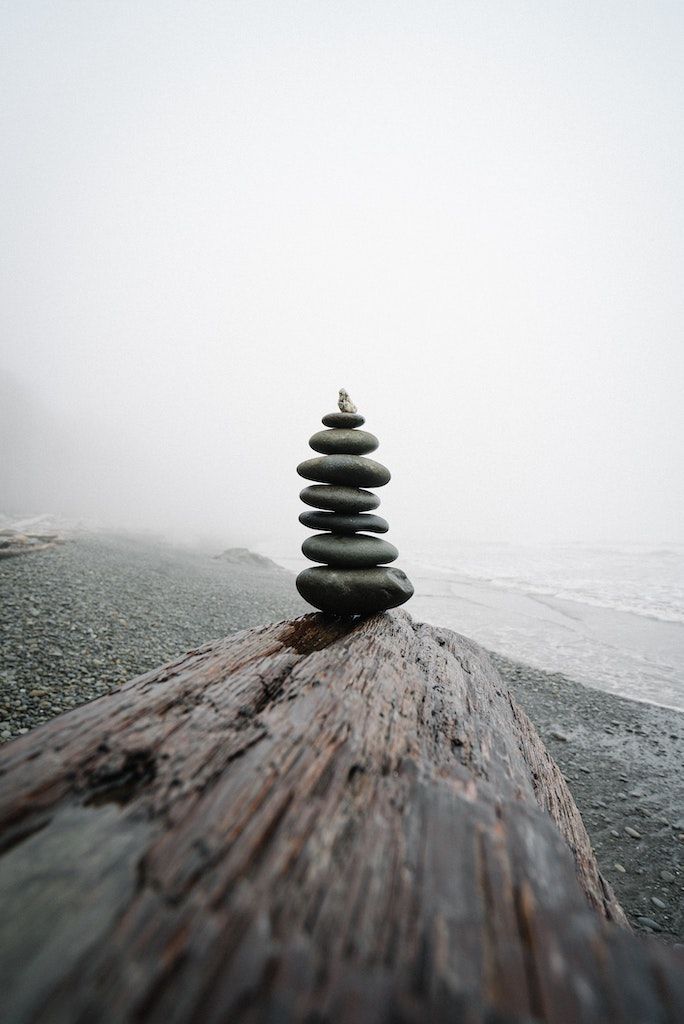
Breathing is one of the most essential parts of life, and yet because we do it automatically, most of the time we don’t think about it at all- but the way that we breathe can have a huge impact on our nervous system and well-being. When we are scared or angry, we breathe quickly with short inhales and exhales. When we sleep, we breathe slowly and deeply. I’ve noticed that when I’m anxious, I hardly breathe at all, leaving me lightheaded and dizzy, or that when I panic, I hyperventalate. Learning how to be mindful of our breath and how it connects with the body can help us to better understand ourselves and control the way we respond to our surroundings. It is a powerful tool that can be used to change our emotional state, release tension and trauma in the body, and even boost the immune system.
Here’s six breathing techniques I use and love!
Box breathing
Box breathing is simple grounding practice. This is what I use the most during a busy day when I just need to take a second to come back to myself. The idea is to inhale, hold the breath, and exhale each for the same amount of time. I like to do 4 seconds, but you can do whatever is comfortable to you!
How to: Inhale 4 seconds, Hold 4 seconds, Exhale 4 seconds
Repeat
The 4-7-8 method
Also known as meditative breathing, this method will help to slow down your heart rate and reduce stress levels. I like to do this one laying down before bed.
How to: Inhale 4 seconds, Hold 7 seconds, Exhale 8 seconds
Repeat
During that long exhale, I like to imagine all of the tension in my body leaving with the breath.
Breath counting
This technique is commonly used for anxiety and focusing the brain away from racing thoughts.
How to: First take a couple of big, deep breaths. Get some oxygen back into your blood.Then, breathing normally, begin counting each exhale.
When you reach 5, start again at 1
Repeat as many rounds of 5 as you like
Belly breathing
This is how babies breathe! Breathing this way activates the diaphragm and massages the abdominal organs. It’s a great way to calm anxiety or prepare you for sleep.
How to: Sitting or lying down, put one hand on your chest and the other on your stomach.
Take a deep breath through your nose, pushing the air down into your abdomen so that your stomach expands instead of your chest. The hand on your chest should stay still while the one on your stomach rises.
Exhale slowly through your mouth and repeat at your own pace
Ujjayi pranayama breath (or ocean breathing)
Pranayama is a term used in yoga which basically means ‘breath control’. Ujjayi is a technique that’s often meant to be used throughout an entire yoga practice to help maintain rhythm and sync the movement of the body with the breath.
How to: Inhale through the nose. Exhale through the mouth as though you are trying to fog a mirror or window. You can even hold your palm up to feel the warm air as you exhale to help imagine this.
Notice how breathing this way feels in your throat and contracts the muscles at the back of the throat.
Now close your mouth, continuing to breath this way through slow, controlled exhales out the nose.
Breathing like this should sound similar to the rolling tide of the ocean.
Breathing into where it hurts
I’ve saved my favorite for last. This type of breathwork is great for those with chronic pain or for releasing tension/trauma in the body. I’ve found it to be helpful for easing headaches as well.
How to: Laying down or sitting in a comfortable, relaxed position, close your eyes and think about the places in your body that hurt or that you are holding tension. Do a little body scan starting at your toes and moving up slowly to your head.
Are there parts of your body that are sore? Are your hands balled into fists? Are you clenching your jaw? Most people hold tension in the upper back, neck, jaw, and face. Relax.
Once you’ve found the places that hurt, take deep breaths and imagine each breath filling that place with healing fresh air and light.
If you like, think of a color that represents healing to you (I usually use a forest green or candle-light orange). Imagine that the breaths you are taking are that color, and that each one is cleansing and healing your body like salve to a burn. This practice can be pretty intense and emotional if you sit with it for a while, but your body will thank you for it in the long run.
Final thoughts
If you’re interested in breathwork and yoga, check out Yoga with Adriene. (https://www.youtube.com/c/yogawithadriene) I love her videos! She even has a 30 day yoga journey on breath and connecting with the body.
Paying more attention to the way I breathe and doing practices like these has helped me a lot in understanding where I hold stress in my body and learning to let it go. It’s also helped me get to sleep faster and feel more at home in my body.
Have you tried breathwork?


